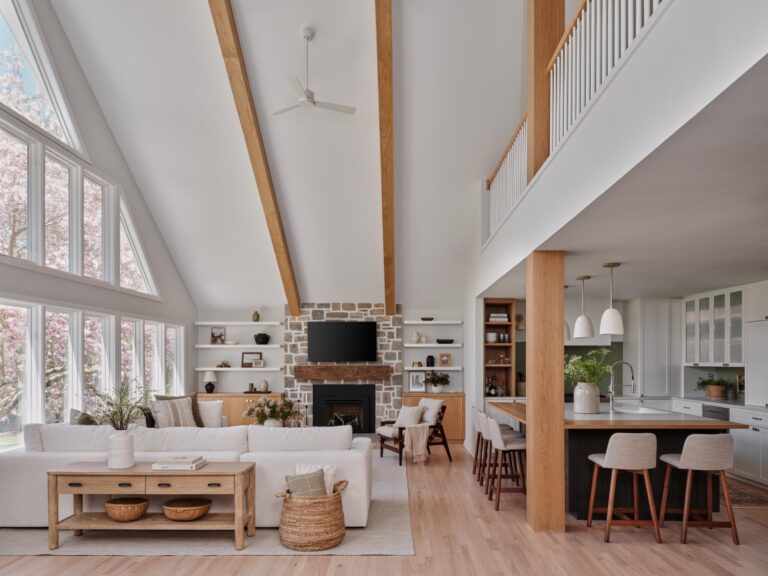When I was introduced to weaving at eleven years old at a Carnegie Mellon University summer program, it was like someone opening a door,” says Elizabeth Eakins. “I was a quiet and very visual child and the involvement with fiber, texture and color was just magic for me. It was a natural fit and became a life-long love affair.”
After graduating from art school and landing in NYC, Eakins lived in a downtown loft, where she started out making a single rug at a time by private commission. Her early work was featured in The New York Times Home Section and her reputation with high-profile clients began to grow. Her background in historic preservation led Eakins to work with the Metropolitan Museum and Gracie Mansion from 1979 to 81, restoring existing carpets and reproducing others.
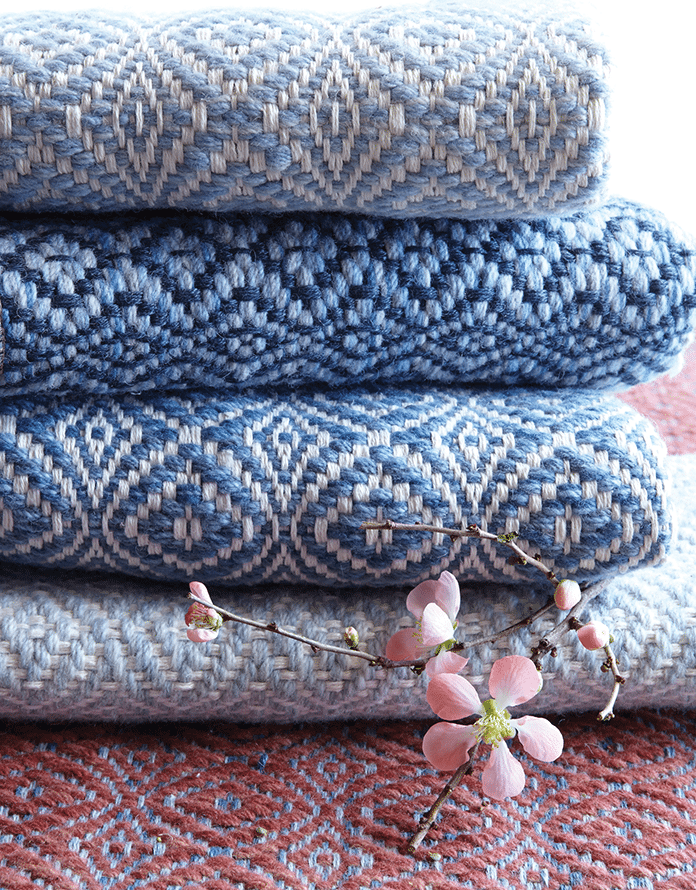
Elizabeth Eakins opened its first public shop in 1981 in SoHo on Thompson Street, with a colorful collection of hand-braided and handwoven rugs. The business grew quickly and moved uptown, first to Lexington and later to Madison Avenue, where it still stands today. Meanwhile, Eakins sought showroom representation in Los Angeles and added a space in Norwalk, CT, where she maintains a 23,000 square foot flagship location, which also functions as a manufacturing and production facility. Eakins explains, “Our current NYC showroom is a little jewel box where designers can take out samples like a library. In 2008, I decided to open my own showroom in California on Melrose Avenue, because New York and Los Angeles are our two important, primary markets. But the Connecticut flagship is much more efficient due to the sheer size of it. So we have three locations now, all of which are very personal—they are open to the public, but they function for designers as well.”
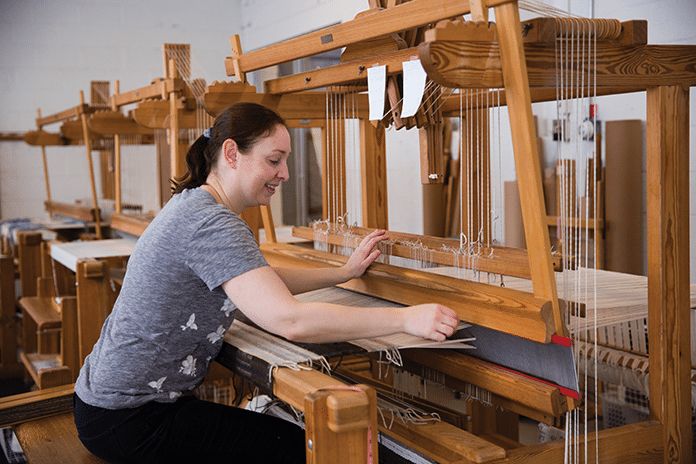
Throughout her career, Eakins conquered textile-making frontiers that progressively took her business to the next level. For example, since questionable quality-control in emerging countries requires one to be “hawkish”, Eakins built her very own weaving center in India. And because weaving on looms limits fine-line quality and elaborate designs, Eakins began hand-tufting in Asia in 1984, which allowed her to create “drawings” on rugs. “We still have a core group of clients that want the 100-color pictorial rugs,” she explains.
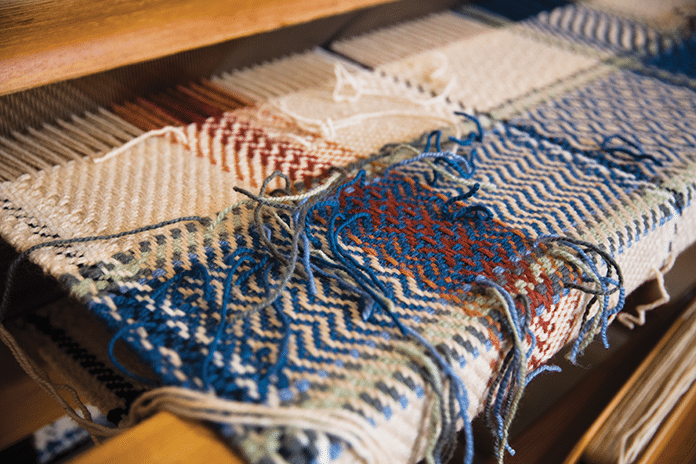
There was a critical point in the 90’s when Eakins reviewed her mission statement and assessed just how big her company would get. “When I started out, the industry was more formalized and structured. Design professionals were highly educated and understood customization and lead times,” Eakins explains. “It was a longer process. Mark Hampton and Albert Hadley are perfect examples. They would draw for me exactly what they wanted for their rugs. They valued the quality and collaboration of the design vendor,” says Eakins. Today, sometimes poorly-made, cheaper merchandise is easily available online—something Eakins says is a disservice to the customer. “I completely understand that people have a budget; that is a reality. But the flip side is, it’s a time when we really need to be thinking about our global resources. A lot of what people are buying on the Internet is dumpster material that may not even decompose in a landfill. People are increasingly detached from the natural world, but we have a responsibility to our planet.”
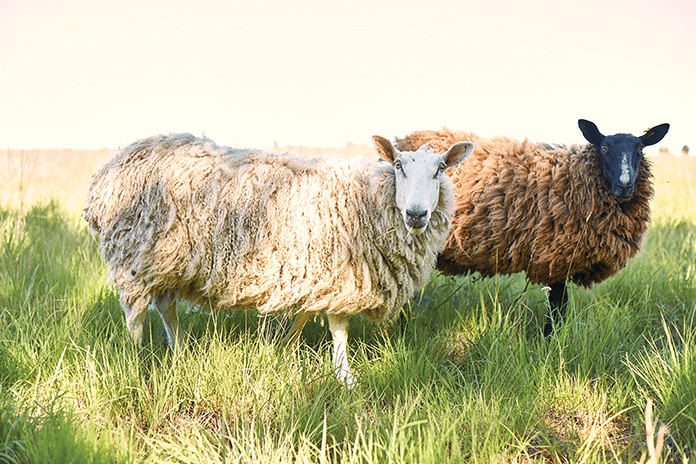
While Eakins understands the industry has changed, she has stayed her course. “I decided I wasn’t looking to be the biggest fish in the sea. If you take the next step to mass market, it’s a different business. I wanted to continue to make something of quality, by hand, out of natural fibers in the United States as much as possible, as well as build relationships globally. That hasn’t changed. But to get substantially bigger, I would lose many of those qualities that I value—it’s just the reality of manufacturing,” she says, noting that when making things by hand, labor alone is always the biggest piece of the price.
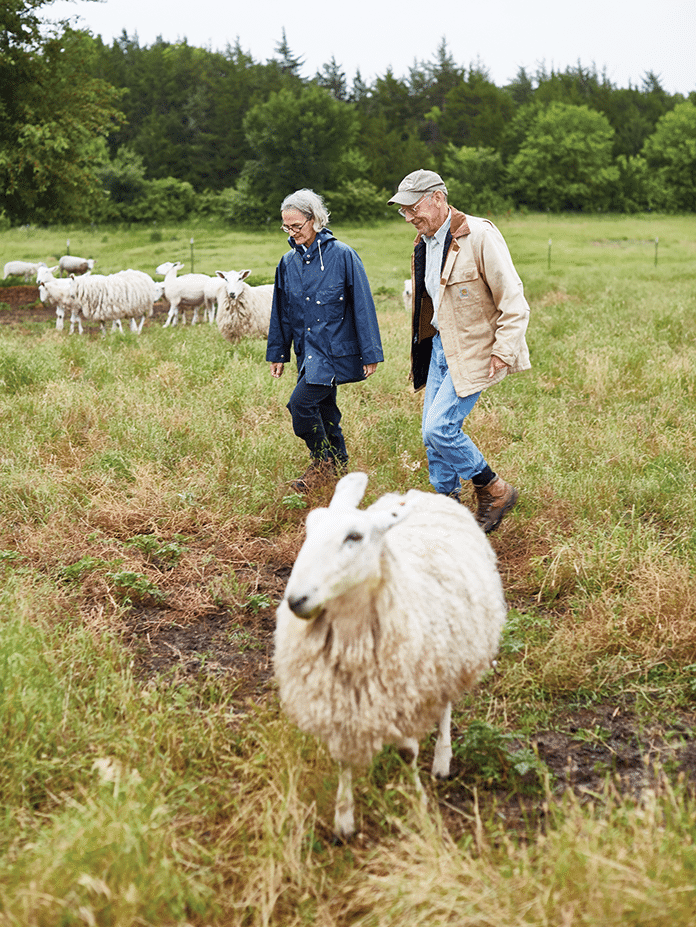
Fifteen years ago, Eakins decided to add yet another layer to her business. She and her husband, Jerry Wigglesworth, bought a 240-acre farm in his native Kansas where they raise a flock of Border Leicester sheep, which she uses for the raw material in her rugs. They currently have about 120 sheep, with a possible 24 lambs expected this spring. Eakins explains, “We selected the Border Leicester breed because it’s a beautiful wool with a wonderful luster that’s very strong. We insist on no chemicals, no inputs and we use strict genetic chronicling. When you have livestock, the health of the animals is tied to the quality of the fleece. It is a huge responsibility and we do all our own work raising them. A flock with a fever or parasitic load will have a diminished fiber quality with less strength. So when you spin it or put it on the loom, it will start to fall apart. This happens all the time in the marketplace, but the consumer doesn’t understand it.”
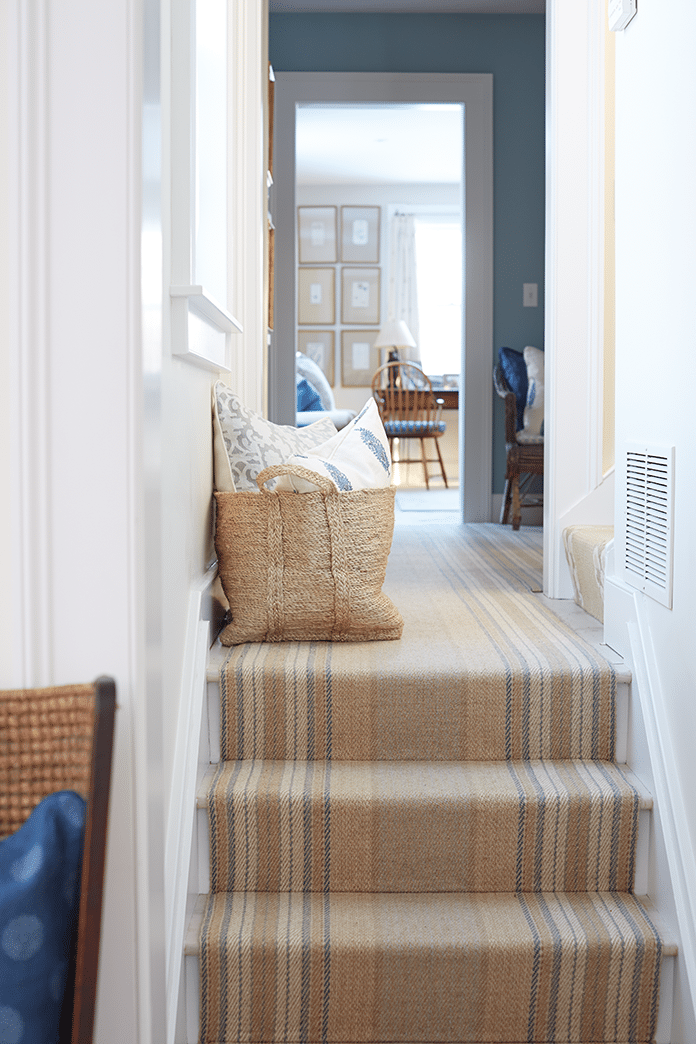
Eakins is passionate about this expanded business plan, which has enhanced her work and become one of her favorite parts of her company. “If someone asked me which rug they should buy, I would say Private Reserve, without question. Private Reserve is a rug made with wool from my farm only, and it is beautiful.” Colors include whites, chocolates and all shades of silver-grey, which Eakins decides how to blend and spin the natural colors.
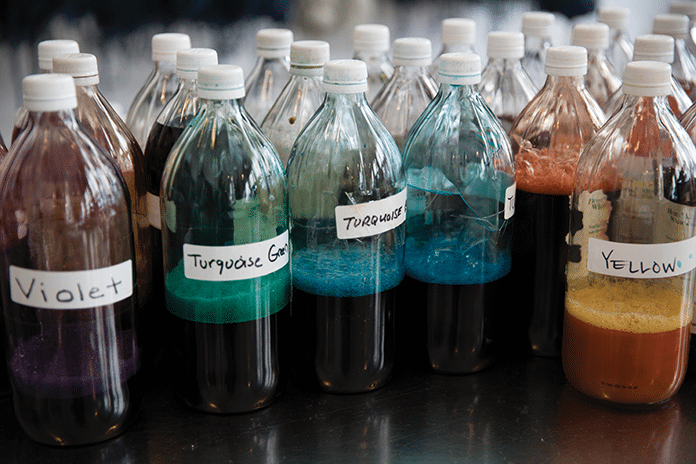
“Typically I don’t dye it, although it can be done. I have worked in color my whole career, so it’s an interesting thing. It’s like the difference between black and white and color photography. I find that the client who is buying Private Reserve is mostly interested in the process and purity of it,” says Eakins. Private Reserve also has a hypoallergenic quality, which appeals to people with health issues and chemical sensitivity challenges.
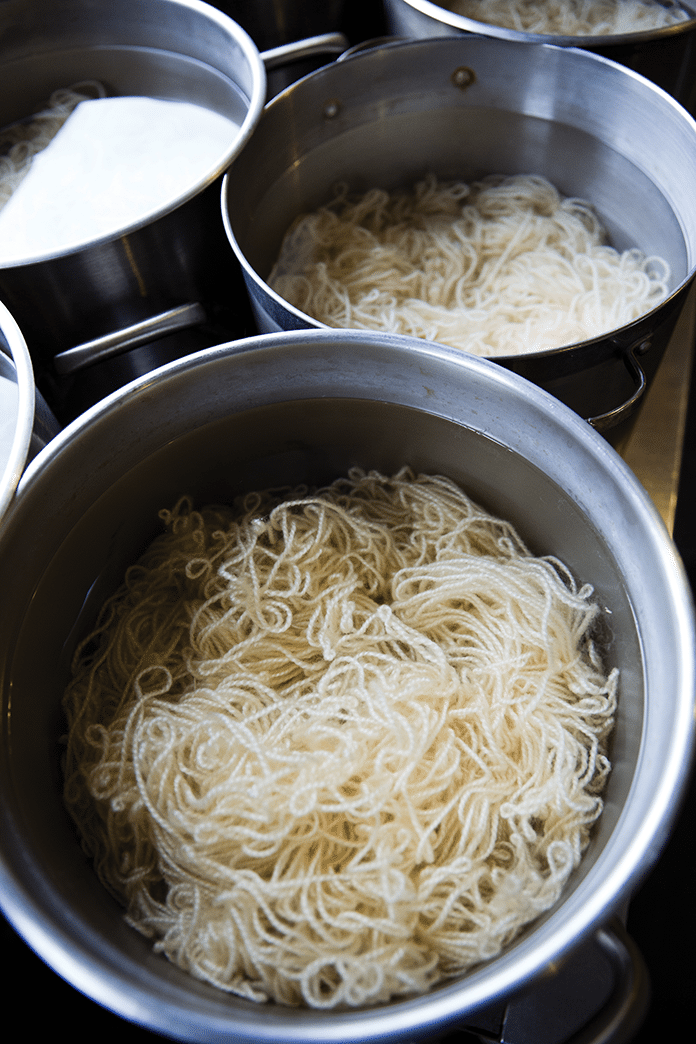
One year after opening the farm, Eakins introduced her own line of fabrics, which is a fast growing segment of her business and today consists of approximately 200 hand prints, jacquards, wovens and solids sold at showrooms throughout the United States and in London. Eakins says there are textile applications she’d still like to explore, like felting and molding wool for furniture, but she’s only interested in doing things the historical way.
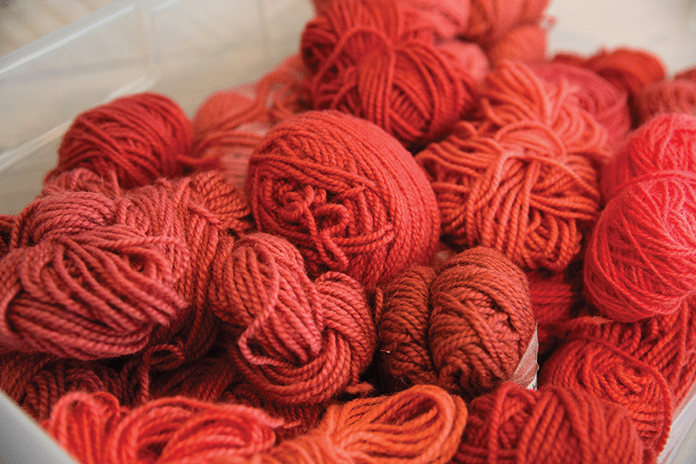
“The advantage is, and I can safely say at this point in my career, I’m one of the few people in the textile industry that knows how to make something from the ground up.” Eakins explains, “When you understand raw materials from fiber to product, and you complete the entire process yourself, you can make just about anything you want. Your custom capabilities are endless.”
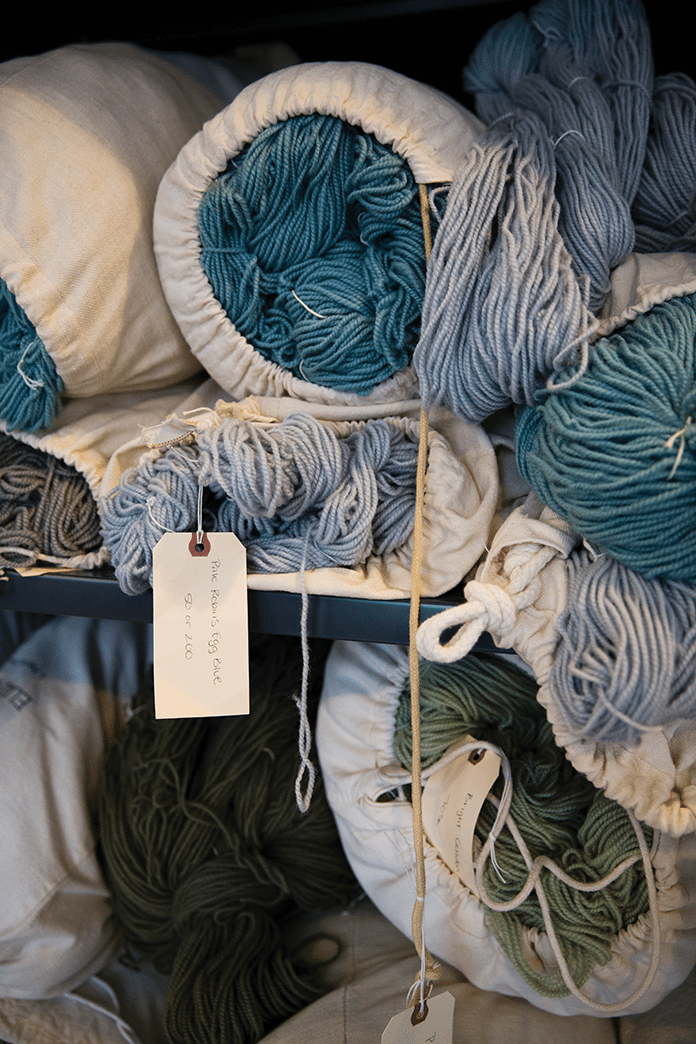
In some ways, Elizabeth Eakins is still the cottage industry she started back in 1978, but Eakins has undeniably built substantial brand equity during the course of 40 years and keeps an open mind. “We are currently listening to a younger client base and how their needs may differ from previous generations,” she says. “It is essential to continue to look at ways to make products that are affordable and more accessible for customers, while maintaining quality.”

Eakins now splits her time evenly between Connecticut and life on the farm in Kansas. Her exact whereabouts are determined by what the needs are at any given time, but she commutes regularly. Says Eakins, “I love my life on the farm. I get there and I breathe. It’s very peaceful and beautiful, and we are fortunate. But I’m also from a pull up your boots and work background. It enhances my business and my life in every way.”
ELIZABETH’S FAVORITES
Design tip: Defy trends, always consider quality that will endure. If you are unsure, hire an interior designer.
Part of your job: Working with animals. The natural world raises the bar; it reminds us we are part of a greater picture.
Restaurant in the area: Bar Taco. Good food, all ages and so noisy!
Cocktail: Bio dynamic wines.
Travel destination: Always India!
Color: Blue
Flower: Salvia Patens in Cambridge Blue. It grows wild in the Prairie. It is the most beautiful sky blue.
Guilty pleasure: Crisp, minimal white shirts.
Season: Spring. New life, light and color, especially green, which goes from chartreuse
to the most wonderful blue green as the chlorophyll rises.
Museum: Calico Museum of Textiles in Ahmedabad, India. A textile person’s must.
Item in your home: The portrait of my husband as a child. It was painted in the 40’s. He was a beautiful child and it is a wonderful painting.
Photographs by Bruce Plotkin


